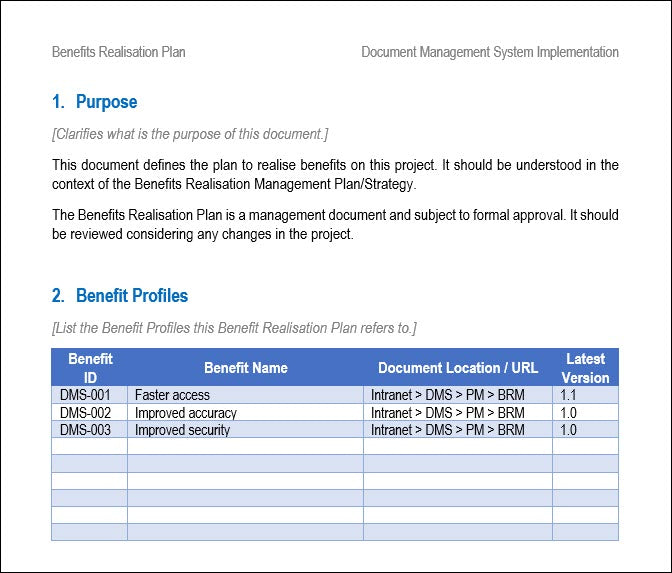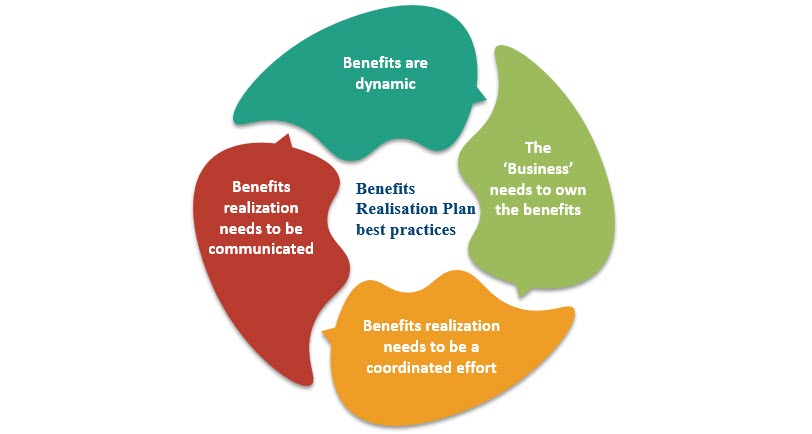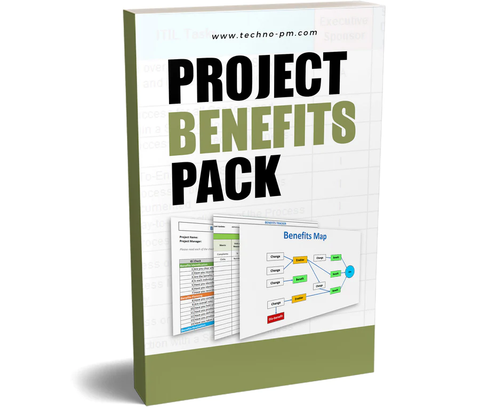Benefits Realization Plan
Organizations undertake projects to realize benefits, yet, this is easier said (or written) than done. While some organizations have awakened to the need of building a business case and identifying benefits from the offset of any change initiative, many are still pouring money down the drain because they are missing a key capability in the benefits management process: benefits realization.

By the time the project is over, the project management team is ready to move on to the next adventure, the project sponsors are already busy with their day-to-day job, and benefits owners are nowhere to be found. The project was approved on the basis that it would deliver certain benefits, but time has passed, and no one is checking if they really got delivered or not. Sounds familiar?
(Un)fortunately, you are not alone. Benefits realization are still often left to chance. The good news is that we can do something about it. Como with me, I have a plan: the benefits realization plan!
What Is It?
In a nutshell, the benefits realization plan provides a consolidated view of the key milestones detailed in each of the Benefit Profiles associated with a project. That means that each project should have its own Benefits Realization Plan. It is not to be confused with the Benefits Realization Management Plan, also known as Benefits Management Strategy, though! While the previous covers the full lifecycle of the benefits management process, the Benefits Realization Plan is interested in the realization stage only. Having a central plan for each project, will allow stakeholders to understand how benefits fit together, clarify responsibilities, and will be used to monitor, track, and set review controls against the collective set of benefits.

The Benefits Realization Plan can be produced as a document or as a spreadsheet, in a table format, providing that it includes the key data available in the Benefit Profiles, such as measurement to be used, measurement frequency, or benefits realization target. It should include at least the following:
- Benefit title
- Benefit owner
- Timescale for realization
- Metrics
- Target data
- Measurement mechanism and frequency
- Review dates
When Should I Draft One?
One of the main causes for poor benefits realization is the fact that the planning is done too late in the project. However, if you are planning for something, you surely should do it in the beginning, right? The same applies to projects and the Benefits Realization Plan. It should be one of the activities included in the Planning phase of the project, right after the Benefit Profiles and the Benefits Management Strategy have been approved.
Who Is Responsible For It?
Accountability for the Benefits Realization Plan lies with the sponsor (also referred to as Senior Responsible Owner, SRO, in the context of programs). However, this is not to say that the sponsor should do it all on his/her own. In fact, in order to build in buy-in and commitment to the plan, it is fundamental that the Benefits Realization Plan is reviewed by the project manager and each of the beneficial owners, as well as the Business Change Manager, should that role exists in the governance of the project/program. Make no mistake: no one destroys what one helps to build.
Benefits Realization Plan Best Practices
I told you already about the importance of building the Plan early and have it reviewed and bought-in by the beneficial owners, but there are a couple more tips that can you put in the leading position for benefits realization, such as:

- Benefits are dynamic: thus, the Benefits Realization Plan needs to be regularly reviewed and updated. This is particularly important at stage gates and when change requests are approved since there can be an impact on the benefits (e.g., regarding the target or their timescales).
- The ‘Business’ needs to own the benefits: benefits tend to be realized long after the project is completed thus it would be risky to place accountability in the project management team. Instead, benefits should be linked to the areas that are going to…well, benefit. Do not have a signed-off Benefits Realization Plan without having benefit owners identified and their clear agreement.
- Benefits realization needs to be a coordinated effort: benefits do not happen out of thin air and they require a certain mindset and organizational culture to flourish. The whole organization needs to acknowledge their importance and make benefits realization a goal.
- Benefits realization needs to be communicated: the Benefits Realization Plan will feed a Benefits Tracker, where all the benefits reviews due in the organization/portfolio are listed. In order to generate credibility and accountability, the results of such reviews should be shared. This will also inform future Benefit Realization Plans, improving estimates, and learning from the past.



